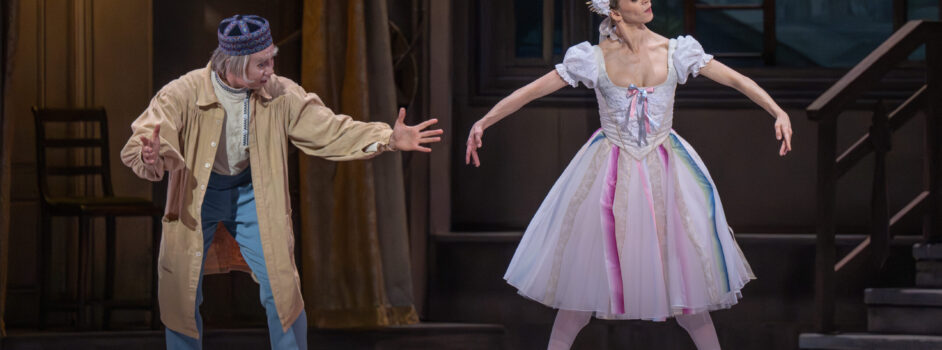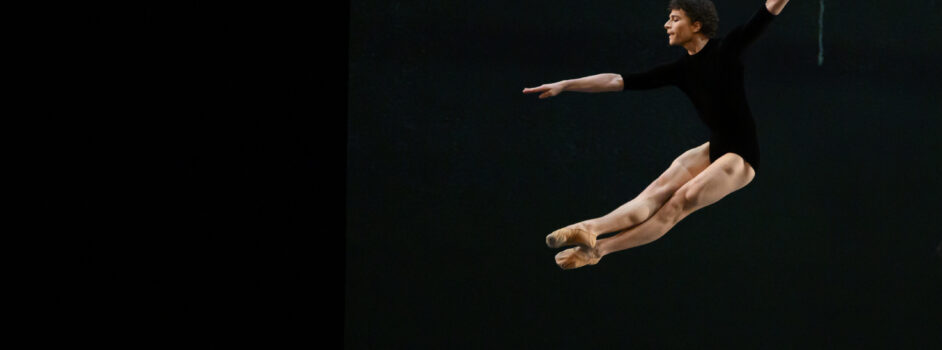Plus de détails
Théâtre Jean-Vilar. Vitry-sur-scène. 18-V-2014. Chantier Woyzeck, opéra de chambre d’Aurélien Dumont pour 10 musiciens, 8 chanteurs et 4 enfants, sur un livret de Dorian Astor, d’après les manuscrits du Woyzeck de George Büchner; commande de la Péniche Opéra; mise en scène Mireille Larroche, scénographie, éclairages Thibaut Fack, chorégraphie Francesca Bonato, vidéo Gabriele Alessandrini. Estelle Béréau, Marie, Hélène Fauchère, Margret; Caroline Chassany, Louise; Rodrigo Ferreira, Woyzeck; Guilhem Terrail, le « Tambour major »; Christophe Crapez, le « Docteur »; Vincent Bouchot, le « Capitaine »; Virgile Ancely, Andres, le « Bonimenteur »; les enfants de la Maîtrise des Hauts de Seine, Des enfants. Ensemble 2e2m; direction Pierre Roullier.
 The title of Aurélien Dumont's opera, Chantier Woyzeck, which premiered at the Théâtre Jean-Vilar in Vitry-sur-Seine, has a triple meaning. First, it describes the setting: a neighborhood under reconstruction, a cité (housing development) being demolished, where the twelve characters, who comprise a community without normality or humanity, live on a piece of wasteland nicknamed “the plateau” because it overlooks the city.
The title of Aurélien Dumont's opera, Chantier Woyzeck, which premiered at the Théâtre Jean-Vilar in Vitry-sur-Seine, has a triple meaning. First, it describes the setting: a neighborhood under reconstruction, a cité (housing development) being demolished, where the twelve characters, who comprise a community without normality or humanity, live on a piece of wasteland nicknamed “the plateau” because it overlooks the city.
Chantier Woyzeck can also describe the state in which George Büchner left his manuscript when he died in 1837, at the age of twenty-three. This tragedy, inspired by a short news item, was taken up by Berg as early as 1913; but the sequence of the scenes was left undetermined by the playwright, who left two outlines with tangible differences. Dorian Astor chose to go back to the opera's origins and has used the fragments of Büchner's play to produce the libretto of an opera “for our times,” in French and in eight tableaux, fifteen scenes, and an epilogue. The characters are the same as in Berg's version, with the addition of Louise, but they are less clearly defined. Finally, Chantier Woyzeck also refers to the actual work of the production: two weeks of rehearsals in the middle of the Cité Balzac, a residency in the Collège Paul Valéry in Thiais, and workshops with students from the schools and the Conservatoire of Vitry-sur-Seine. All of this took place simultaneously with the creative process, the actors, composer, and writer all playing a part in the work of art being made.
Mireille Laroche's staging was somewhat muddled, but it featured a video combining projections of impressive images of demolition with the faces of the characters, to striking effect. The stage design was very minimalist, with a kitchen sink as in Warlikowsky's and an elevated platform on which a guitarist, steel drummer, and rock singer could perform.

Given the play's powerful theme, Dumont undertook a risky musical adventure but with complete confidence. He chose a reduced array of only ten instruments (including two electric guitars) and one electronic device. The writing, very complex, was chock-full of sonic ideas and often played with an ambiguity between the electronic source and instrumental sound, which was sometimes very dense. The vocal writing was just as malleable, moving from singing to talking, from lyrical inflection to choral declamation, through rap and Balinese kechak-like rhythmical games. The rock song sung in English by Woyzeck just after Marie's murder “L'était une fois un pauv' gamin” (There was once a poor kid), accompanied by rock guitars, proved a very efficient way to energize the action.
Countertenor Rodrigo Ferreira offered an impressive performance as Woyzeck, both physically and vocally, using every register of his voice. Next to him, Estelle Béreau as Marie did not pale and was especially touching as she read the Bible in scene 11. Guilhem Terrail as the Tambour-Major (Drum Major), Christophe Crapez as the Doctor, and Vincent Bouchot as the Captain, stuck in his wheelchair, displayed all the violence of their neurotic natures. Sharing the stage were Hélène Fauchère as Margret, Caroline Chassany as Louise, and Virgile Ancely as Andres (aka “The Huckster”), who introduces the audience to his “menagerie” at the beginning of the opera, as does the animal tamer in Berg's Lulu), who collectively provide efficient choral commentary at key points in the story. During the epilogue, their collective voice describes Woyzeck's madness in a chillingly clinical way over a translucent electronic flow, bringing the opera to a close on a frightening note.
Traduit par Romain Paulino – Photo (c) Alex Bonnemaison
Plus de détails
Théâtre Jean-Vilar. Vitry-sur-scène. 18-V-2014. Chantier Woyzeck, opéra de chambre d’Aurélien Dumont pour 10 musiciens, 8 chanteurs et 4 enfants, sur un livret de Dorian Astor, d’après les manuscrits du Woyzeck de George Büchner; commande de la Péniche Opéra; mise en scène Mireille Larroche, scénographie, éclairages Thibaut Fack, chorégraphie Francesca Bonato, vidéo Gabriele Alessandrini. Estelle Béréau, Marie, Hélène Fauchère, Margret; Caroline Chassany, Louise; Rodrigo Ferreira, Woyzeck; Guilhem Terrail, le « Tambour major »; Christophe Crapez, le « Docteur »; Vincent Bouchot, le « Capitaine »; Virgile Ancely, Andres, le « Bonimenteur »; les enfants de la Maîtrise des Hauts de Seine, Des enfants. Ensemble 2e2m; direction Pierre Roullier.






